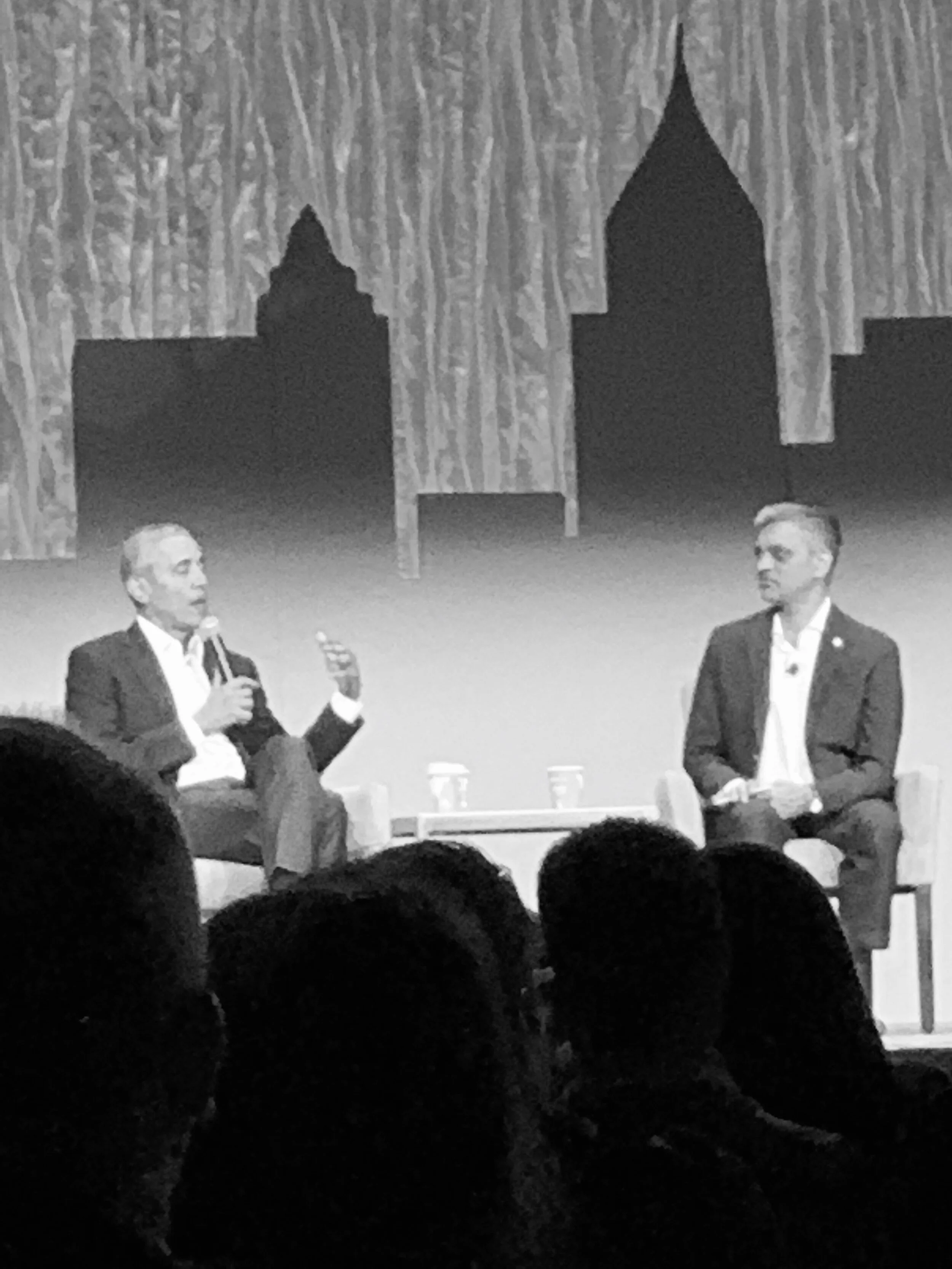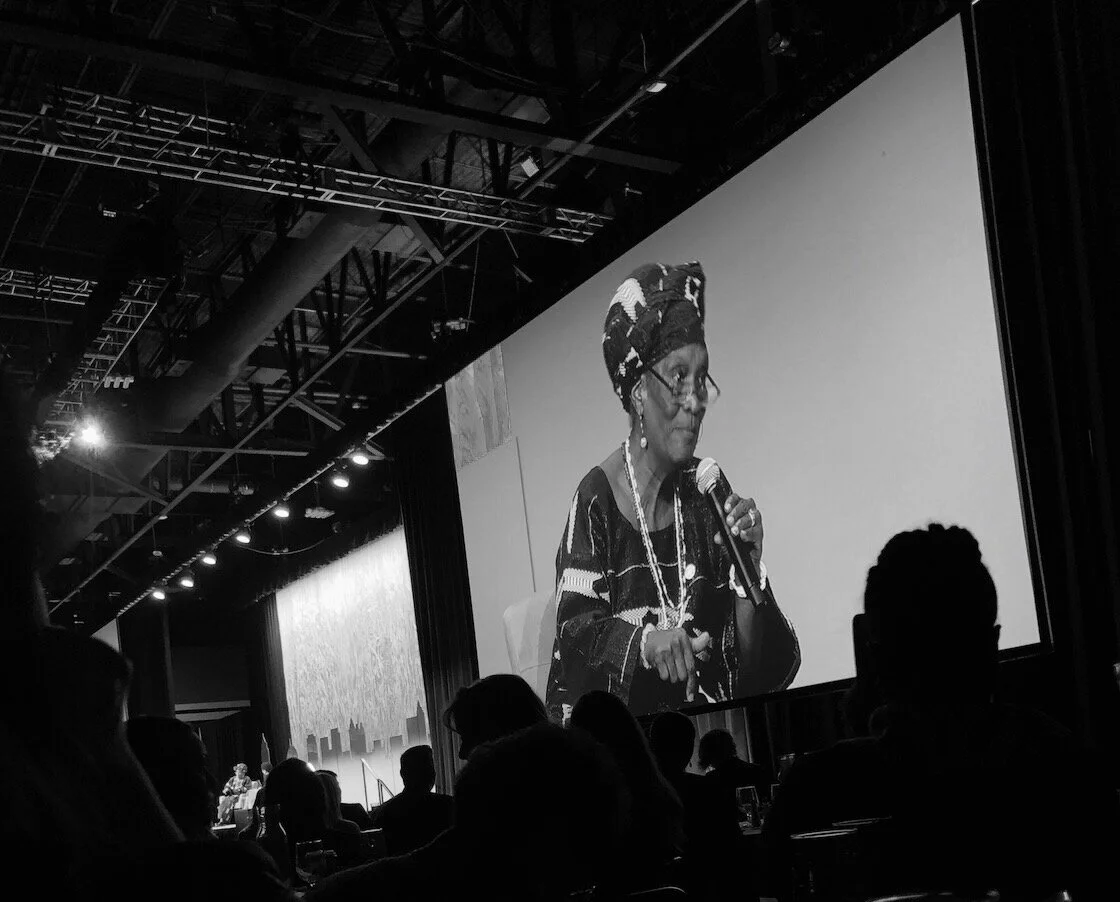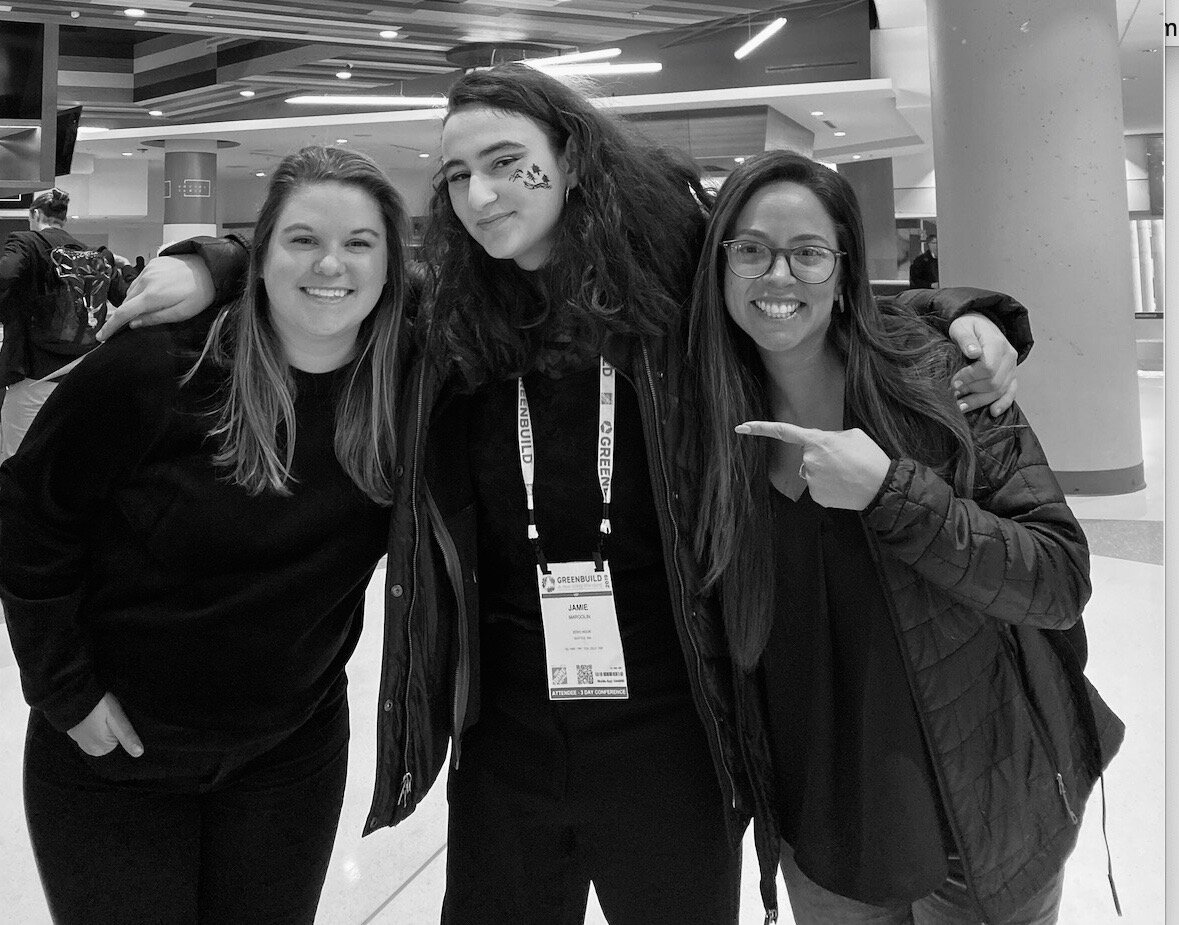Greenbuild 2019 – A Week in (a brief) Review
By Katie Matthews, Project Manager
A/G and friends are back in CA after a week in Atlanta, Georgia. Greenbuild brought together the sustainability community to continue conversations about the current state in the industry as well as the areas towards which we are seeing it shift.
11/20 Opening Plenary
OBAMA OBAMA OBAMA
The conference kicked off with the opening plenary and its keynote speaker: none other than the former president himself, Barack Obama. The hours in line was worth the wait! Mahesh Ramanujam (USGBC President & CEO) and President Obama sat and discussed how sustainability starts with a story. They recognized that although facts can be brought out to prove a need for action, there is much more power in being able to show an individual or community the immediate effects of climate change when discussing it in their own local context. With that said, all sustainability plans need to address the entire community. “It is hard to figure out how we solve sustainability issues and deal with climate change, if you also have huge gaps in wealth, opportunity, and education,” (Obama). All shifts in the market and strides we make toward a more sustainable nation needs to also have an emphasis on inclusivity. We will not and cannot be sustainable or resilient if a large part of the community is being left behind.
The two also discussed how, with the adaptation in social media and technology, we now have access to so much more information than ever before. Because of this, we are in a unique position where we can make daily decisions, and broadcast those decisions, on who and what to buy based off of company core values. We are seeing this a lot in younger generations, especially the millennial age group, where consumers are able to elevate the companies that are putting an emphasis on ethical and sustainable practices. Obama made a point to say that “you can say what you believe in, but if you don’t spend your time, energy and money towards it, you don’t actually believe in it. It is just a story you are telling yourself to feel good.” This poses the question around how invested we are in sustainability – Do all the companies we support also invest their time in money in the same ideals?
11/20-11/22 Greenbuild Education Sessions
ReUsing before Buying New
The buzz phrase this year at Greenbuild was Embodied Carbon. Not only did we attend sessions with it as the main topic, but also saw mention about the embodied carbon in every other theme across the board. This was due in part to the new tool (finally) released to the public on Tuesday 11/19. The Embodied Carbon in Construction Calculator (EC3) tool allows owners, designers and contracting teams to access information on materials to help make executive and smart decisions on what in going into their buildings. It’s a free tool allowing teams to benchmark and make assessments focused on the upfront supply chain emissions of construction material by using material quantity assumptions, BIM models and third party verified Environmental Product Declarations. We attended sessions that went through the task of benchmarking the embodied carbon for a renovation project as well as the process of using a similar tool to EC3 to design a complete building with low embodied carbon goal.
Projections are showing that globally we will be growing by over 2 trillion sf ft in development every 35 years. That is equivalent to developing a New York every 35 days. With this in mind, there are steps that can be made to lower the carbon footprint associated with the built environment. To break that down, there are two different phases where the carbon footprint comes into play: upfront carbon and operational carbon. This focus on embodied carbon is starting to take up more of the conversation as cities and owners are pursuing goals of carbon neutrality, leaving the embodied upfront carbon to exceed the operational carbon. Embodied carbon will be the biggest contributors to GHG emissions as cities adapt zero carbon initiatives, and that embodied carbon goes up with every renovation and retrofit to a building. Designers need to begin taking this into account at the schematic stages of design. We can now start to assess different construction materials against each other to choose products that have a lower contribution the GHGs. In one session we heard a case study for a heavy timber building in Toronto, Canada by Sidewalk Labs. During the design process the team compared materials such as timber and aluminum. Structural materials make up for 60% of the embodied carbon for a building. Although wood has less Global Warming Potential, it requires far more material compared to aluminum. Ideally, the best-case scenario when looking to a new building, is to ask what can be used from the existing structure. How can we design new buildings to have this possibility for reuse later on? How do we make structural materials ‘deconstructable’ in some areas to allow for renovations without demolishing a whole building?
We also saw this concept of ‘reuse’ reiterated again in sessions about zero waste (there was at least one session on the topic in every time bracket!). In years past the conversation had always been centered around how to properly dispose of waste to minimize the solids ending up at landfill. But the approach this year was more in the lens of limiting the waste at the beginning of the cycle through different construction practices and operational practices. Did you know that the US is one of the highest generators of solid waste per capita in the world? Sessions led by companies like All About Waste discussed how TRUE Zero Waste certification focuses on pushing facilities and building management to limit waste generation in its day to day practices, which is something we can all start to apply in our daily lives.
11/20 Women in Green Power Luncheon
“LOVE, LOVE, LOVE, and LOVE Again.”
The theme for the Women in Green Luncheon this year was ‘Sheros’ and how we as a community can lead with a culture of courage, speak up for injustice, and listen with open minds. USGBC’s Kimberly Lewis kicked off the conversation, as she does every year, with excitement, ready to discuss examples of “leading with courage.” The luncheon keynote for the day was Dr. Mildred McClain. Dr. McClain is an environmental justice activist from Savannah Georgia, who led us through her life story growing up in the South. She has served on many committees, is a mother and grandmother, a professor and founder of the Harambee House/Citizens for Environmental Justice, a community-based organization whose mission is to build the capacity of communities to solve their problems and to engage in positive growth and development. She discussed how climate change and environmental issues are human rights issues and that everyone is affected by global warming. We cannot leave people behind in the conversation. “When you walk through the door, make sure you take someone with you,” (McClain).
11/22 Closing Plenary
“Climate Change is not Santa Claus”
The last session at Greenbuild wrapping up the 2019 conference was the closing plenary with Jamie Margolin and Dr. Marshall Shepherd.
Jamie Margolin is a 17-year-old climate change activist from Seattle, Washington and the co-founder of Zero Hour. Zero Hour is a movement led by youth activists laying groundwork and giving a platform for young teens to have their voices be heard. “We, the youth, believe that #thisisZeroHour to act on climate change. We cannot afford to wait any longer for adults to protect our right to the clean and safe environment, the natural resources we need to not just survive, but flourish. We know that we are the leaders we have been waiting for! We believe that every individual, from every community should have access to clean air, water, and public lands. We believe in putting the needs and health of our communities before corporate gain,” (Zero Hour). She went on to discuss how we cannot have a meaningful conversation about climate change and sustainability if we do not incorporate every other social movement as part of the conversation. Marginalized communities are the ones most likely to see immediate impacts of climate change and in turn will have the hardest time bouncing back. The climate movement must be an intersectional movement. “Our biggest problem isn’t climate deniers, it’s climate apathy,” (Margolin).
Dr. Marshall Shepherd is a leading international expert of weather and climate and is currently a Professor of Geography and Atmospheric Sciences at the University of Georgia. He sees the science behind climate change and why action is needed now. “The question shouldn’t be ‘Do you believe in science?’ Science is not a belief system,” (Shepherd). Climate change doesn’t care if you believe in it or not, and we need to start shifting the way we talk about it. Echoing Obama’s keynote starter, Shepherd reiterated that we need to start talking about sustainability and telling it as a story, illustrating what will happen to each individual if we continue on the same path. Jamie said it loud and clear that climate change should not be an issue that kids have to have on their shoulders. It is the responsibility of the masses to take that burden off of children.
To sum up, we need to include everyone in the conversation about climate change and sustainable practices because it will affect everyone at some capacity, but there are communities who will be hit harder and sooner. Importantly, the speakers and presenters reminded us that whenever given the opportunity, open the door and bring someone through it who can further the inclusivity of the conversation. “We have to go out with our courage and change the world right now. One person at a time. One neighborhood at a time. One community at a time. One country at a time. One continent at a time, because we only have one Earth,” (McClain). Excited to see where the conversations leads next year in San Diego - See you in 2020.





